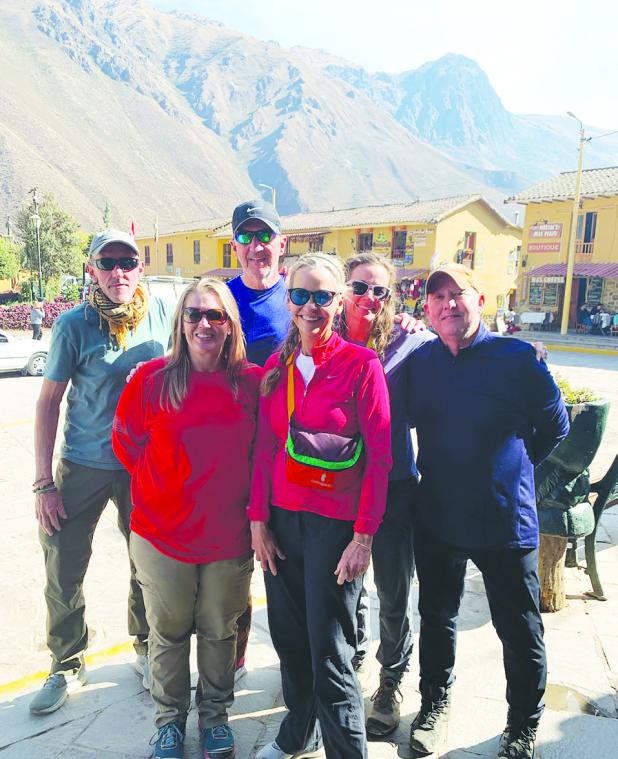
Danny Stewart masters the trail
The one thing guaranteed to drive me to the gym last spring to get back in shape was the sight of Danny Stewart climbing the Stair Master, day after day, in his ball cap and sweats. He was going to climb a mountain - the first one since health concerns two years ago sidelined him from the outdoor activities he loved, he said. He had ten weeks to get ready to climb Machu Picchu in Peru with a group of friends at the end of June. We talked about it when he returned, and his experience shows how to master both fear and the trail in front of you.
Q: When did you start climbing? Danny Stewart: When I was in high school and college, my brother and I would go to New Mexico and Colorado, and we would climb some mountains there, Santa Fe, Baldy, Mount Sneffels. We climbed the Continental Divide Trail in Colorado.
The first technical thing I did was Grand Teton. Then I lived in Colorado. I did a lot of hiking while I was there.
Q: So no fear of heights ever in your life? A: Well, sometimes it’s a little spooky, but not terribly. On Grant Teton there was one section where I looked down and I was like, ‘whoa.’ The scarier thing for me is rocks falling. Going up Sneffels there were a lot of loose rocks and it was just continually getting pelted by rocks. That was scarier actually than falling off.
Q: What convinced you to climb Macchu Picchu? A: My buddy just sprung it on me. He said, ‘Let’s go do this.’ And I [thought], there’s no way I can be in shape by then. And I thought, ‘Well, at least it will push me to get back in shape.’ Q: How did you manage the physical challenges and the altitude?
A: We flew to Cusco and stayed two days and Cusco is 11,000 feet. So we had two days to acclimate there and then we rode the bus for about two and a half hours to the trailhead to start the hike. At that trailhead, we’re about 8,600 feet. The first day, we hiked six hours to about 10,500 feet. The next day was the hardest, because we climbed 3,700 feet. You hike up that next day up to Dead Woman Pass, which is 13,778 feet [and] the highest point on the track. Then you hike down and spend the night just a little bit below that. We ended on day four at Machu Picchu, which is 7,800 feet.
Q: What was it like to explore the famous Incan ruins?
A: Machu Pichu is kind of the showplace of the Incas. It was so rewarding and so beautiful - so much more beautiful than I expected it to be. The scenery was incredible. I don’t know how many times I just said, ‘This is amazing.’ That also keep keeps you going, just because it’s so amazing.
Q: What was the hardest day? A: The second day’s the hardest because of the elevation climb. The third day’s hard because that was over about 12 hours. We ended up finishing with our headlamps on. It was the first thing I’d done since having all these health issues and I was just anxious about getting it done. Every night, I slept about two hours and then you have to get up early, at four in the morning to start and eat breakfast and get ready and pack up and go.
I was absolutely exhausted when I finished. I was with a really good group of people. We had a great guide and everybody was really supportive.
Q: How did you feel when you finished? A: I was just really, really thankful that I was able to do it after having had some major medical issues and thinking I would never be outdoors again, or be able to hike, run, do anything. It was pretty emotional for me actually, because the first night I got all choked up while we were at dinner and thinking about [lying] in my bed on Oak Street, just thinking, ‘Okay I guess this is it from now on.’ It was so nice to be out in the environment, be out in the elements and I had just forgotten how good that feels and how invigorating that is, and it was just great.
